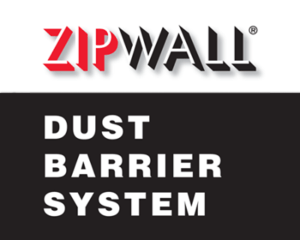Creating a safe shopping environment is of paramount importance to grocery retailers, especially during construction and renovation phases. Ensuring floor safety from the ground up not only protects customers but also the employees and contractors who are part of the construction process. The journey to achieving this safe environment begins before the first brick is laid and continues long after the project’s completion.
The Foundation of Safety
Before any construction or renovation project begins, grocery retailers must conduct thorough planning and risk assessments. This groundwork involves evaluating the current floor conditions, identifying potential hazards, and designing solutions to mitigate risks. Safety protocols are established to guide the construction process, ensuring that everyone involved is aware of their responsibilities and the safety measures that must be in place.
Risk Assessments and Safety Plans
The initial step in prioritizing floor safety during construction is conducting a comprehensive risk assessment. This involves identifying potential hazards such as uneven surfaces, debris, wet floors, and obstructed pathways. By recognizing these dangers early, grocery retailers can develop a detailed safety plan that outlines strategies to reduce risks. This plan often includes:
- Temporary barriers and signage to alert customers and workers of hazardous areas.
- Designating specific pathways for construction personnel to minimize interactions with shoppers.
- Scheduling construction activities during off-peak hours to reduce foot traffic.
- Regular inspections to ensure compliance with safety standards.
Selecting the Right Materials
Choosing the appropriate flooring materials is a critical aspect of ensuring safety during and after construction. Retailers often opt for materials that are durable, slip-resistant, and easy to maintain. The flooring must withstand heavy foot traffic and the potential spilling of liquids. Materials such as non-slip tiles, vinyl, and treated concrete are popular choices due to their safety features.
Strategies for Ensuring Safety During Construction
Communication and Training
Effective communication is crucial in maintaining floor safety during construction. All parties involved, including contractors, employees, and management, must be aware of the safety protocols. Regular meetings and updates help ensure everyone is on the same page. Furthermore, training sessions are conducted to educate workers on the importance of safety measures and how to identify and respond to potential hazards.
Use of Protective Equipment
Personal protective equipment (PPE) is vital for workers on a construction site. Items such as hard hats, safety boots, and high-visibility vests not only protect workers but also make them easily identifiable to customers. This visibility minimizes accidental interactions between shoppers and construction workers, thereby reducing the risk of incidents.
Implementing Safety Barriers
Physical barriers are essential in segregating construction areas from the rest of the store. These barriers prevent customers from wandering into hazardous zones and protect them from falling debris. Barriers can be temporary walls, fencing, or even retractable tape, all designed to guide foot traffic safely around work areas.
Continual Monitoring and Adaptation
Once construction is underway, constant vigilance is necessary to maintain a safe environment. Regular inspections and monitoring help identify new hazards that may arise as the project progresses. Adaptability is key; safety plans must be flexible to accommodate changes or unforeseen challenges.
Real-Time Adjustments
If an unexpected hazard emerges, immediate action is required to address the issue. This might involve rerouting foot traffic, increasing signage, or temporarily halting construction activities. The ability to make real-time adjustments ensures that safety remains a top priority throughout the construction process.
Feedback Loops
Encouraging feedback from employees, contractors, and even customers can provide valuable insights into potential safety improvements. This information can be used to refine safety protocols and address any overlooked risks. An open line of communication fosters a culture of safety and collaboration.
Post-Construction: Maintaining a Safe Environment
Safety does not end when construction is completed. Grocery retailers must remain vigilant and continue to prioritize floor safety to prevent accidents and injuries.
Regular Inspections and Maintenance
Routine inspections are essential to ensure that the flooring remains in good condition. Any damage, such as cracks or loose tiles, should be repaired promptly to prevent accidents. Regular cleaning and maintenance also help keep floors safe and free from hazards like spills or accumulated debris.
Customer Awareness
Educating customers on safety protocols can significantly reduce the risk of accidents. Signage reminding shoppers of safety practices, such as watching their step or reporting spills, reinforces a culture of safety within the store. Clear communication helps customers feel informed and secure while shopping.
Legal Preparedness
Despite best efforts, accidents can occur. Retailers must be prepared to handle such situations by having a clear understanding of legal obligations and liabilities. Having an experienced legal team or consulting a Randalls injury attorney ensures that the retailer is well-equipped to deal with potential claims and can help mitigate the impact on the business.
Conclusion
Prioritizing floor safety during construction is a multifaceted challenge that requires careful planning, execution, and continual adaptation. From selecting the right materials to implementing effective communication strategies, grocery retailers have a responsibility to ensure a safe environment for everyone involved. By maintaining a proactive approach to safety, retailers can build trust with their customers and create a shopping experience that is both enjoyable and secure.
By focusing on these strategies, grocery retailers can successfully navigate the complexities of construction while prioritizing the safety of their floors. As the landscape of retail continues to evolve, the commitment to safety remains a steadfast pillar in delivering exceptional service and ensuring the well-being of both customers and employees.




























